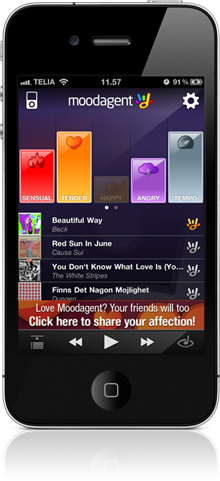![]()
You are welcome to share your thoughts on this article written by Rochelle Fainstein, Digital Marketing Manager at Sterling Brands, New York
Very few products these days are need-to-purchase items. Our stores and ecommerce sites are stuffed with gadgets and gizmos that we could easily do without, and furthermore, there are seven brands offering a slight variation to each gizmo. Saturation is an understatement—so where do we go from here? How do we differentiate in the culture of: ‘Order Today, Receive Tomorrow’ and of course, ‘Shipping is Free?’
A very interesting trend is beginning as software developers perfect new algorithms that understand more than just keywords—they’re starting to get nuance. When search programs and the advertising tied to search can begin to read our intonation, our moods, we have an exciting new opportunity to deliver satisfying experiences to consumers with the same immediacy as a Tweet.
Here’s How.
A few companies have already partnered with developers to create programs that monitor the conversations going on through social media outlets like Facebook and Twitter. An article published this past October in MIT’s Technology Review discusses the importance of capturing as much of the data from the “unrestrained” opinions being expressed by consumers through social media. A number of technology startups are beginning to fine-tune their data reading techniques in order to capture emotions of consumers, including their passion for brands.
The implication of these powerful new tools could be huge. Imagine that now you can not only listen to your ‘fans’ in general and use that information to tweak your next campaign, but that you can respond to an individual who is having a sad day with a ‘pick me up’—an offer, or a token from the brand that may brighten their mood. It’s an amazing opportunity to respond to a consumer’s emotional need, which can lead to a stronger attachment to your brand.
The new music application, Mood Agent, sets a good example for how this new technology can work. The service categorizes users’ music libraries into 5 moods: sensual, tender, tempo, angry and happy; and can create a continuous playlist based on the selected mood. Since so much about the music listening experience is the feeling that the songs elicit, an algorithm that accomplishes mood-based listening is the modern-day answer to the rainy-day mix tape. It also provides great opportunities for advertisements on cloud sites to match the mood with an appropriate offering. One can see how this could expand to TV sites like Hulu with genre-specific programming.
This strategy could also spread out into physical product packaging in a more predominant way—we use food photography to increase appetite appeal, so let’s figure out interesting ways to target mood-based purchases. It may be cliché, but where’s the ‘I-hope-you-feel-better’ ice cream pint?
What other items might be mood-based? More importantly, what kind of feeling does your brand elicit?
About the Author
Rochelle Fainstein is the Digital Marketing Manager for Sterling Brands and doubles as a market researcher and writer on special projects. She has worked professionally in PR, Marketing and Advertising since 2003.
Sterling Brands is a brand strategy and package design firm, founded in 1992 and boasting an all-star roster including design guru Debbie Millman and innovation rockstar DeeDee Gordon. For more information, follow us on Facebook, @sterlingbrands on Twitter, or on the Sterling Brands blog.

